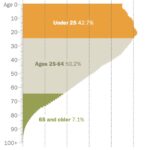Understanding the difference between assessed value and market value is crucial for homeowners and potential buyers. While market value reflects the price a property could fetch in a competitive market, assessed value is used to calculate property taxes. This article explores the key distinctions between these two important figures and how assessed value is determined.
Assessed Value vs. Market Value: Key Differences
Assessed value is the value assigned to a property by a local government assessor for tax purposes. It’s often a percentage of the property’s market value, but can vary significantly depending on local regulations and assessment practices. Market value, on the other hand, represents the estimated price a willing buyer would pay a willing seller in an open market transaction. This value is influenced by factors like location, condition, recent sales of comparable properties, and current market trends.
How Assessed Value Impacts Property Taxes
The assessed value of a property directly determines the amount of property taxes owed. A higher assessed value results in higher property taxes, and vice versa. Before purchasing a property, understanding the assessed value and the local property tax rate is essential for budgeting accurately. While a lower assessed value might seem appealing, it doesn’t necessarily indicate a good deal if the property tax rate is high.
Determining Assessed Value: Factors and Methods
Local tax assessors employ various methods to determine a property’s assessed value. Commonly considered factors include:
- Comparable Sales: Analyzing recent sales of similar properties in the same area provides a benchmark for establishing value. Assessors consider factors like size, features, condition, and location when comparing properties.
- Property Characteristics: The physical attributes of the property, such as size, age, number of rooms, and overall condition, contribute to its assessed value.
- Improvements and Renovations: Upgrades and renovations, like kitchen remodels or additions, can increase a property’s assessed value as they enhance its overall quality and desirability.
- Rebuilding Costs: The estimated cost to rebuild the property in case of damage is another factor considered by assessors.
Mass appraisal techniques, often aided by computer programs, are frequently used to assess a large number of properties efficiently. However, assessors might adjust the computerized assessment based on specific property characteristics or unique circumstances. For instance, a significant renovation could warrant an upward adjustment to the initial assessed value.
Conclusion: Navigating Assessed and Market Value
While both assessed and market value provide insights into a property’s worth, they serve distinct purposes. Understanding the difference between these values and how assessed value is calculated is critical for both homeowners and prospective buyers. By considering both market trends and local assessment practices, individuals can make informed decisions about property purchases and accurately anticipate their property tax obligations.
